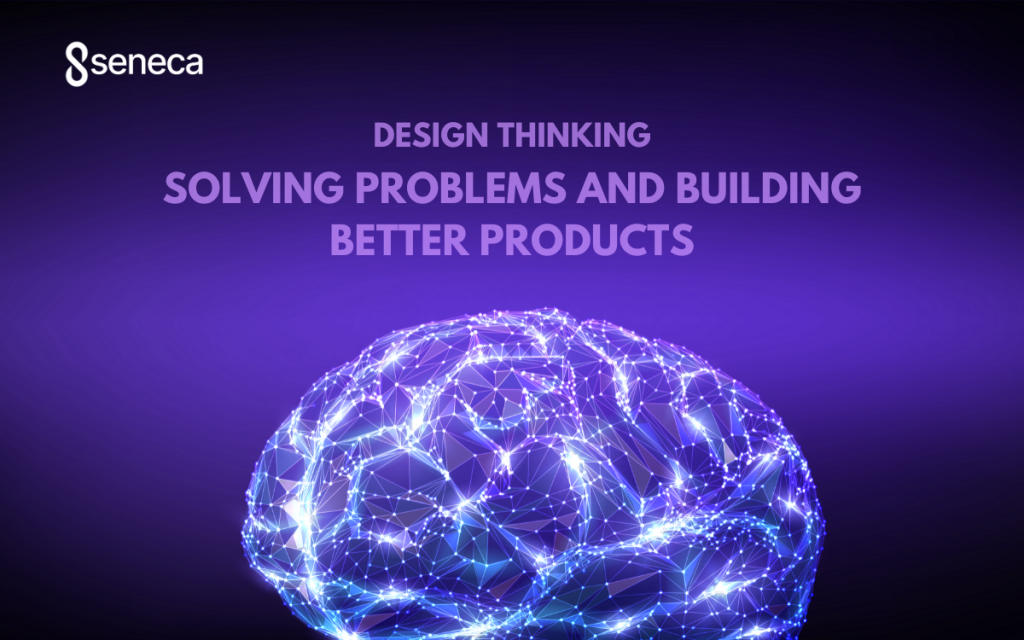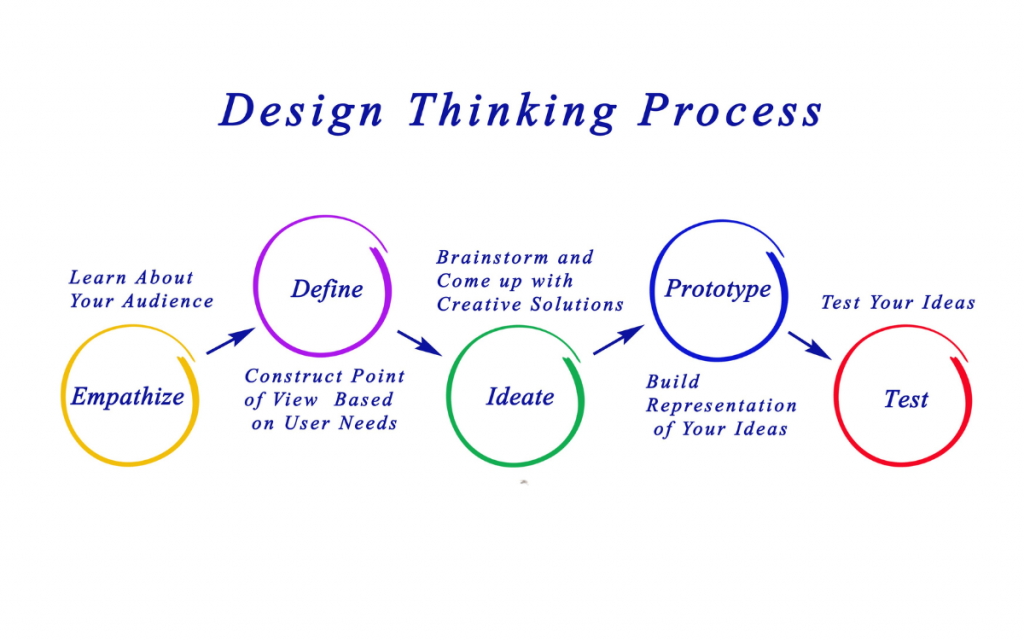Design Thinking: Solving Problems and Building Better Products
See how design thinking helps solve problems, create simple solutions, and design products people actually need.

Modern businesses face constant pressure to innovate and meet changing customer expectations. The traditional approach of improving product features or aesthetics is no longer enough. Today, companies must design solutions that address real customer needs, enhance user experiences, and remain sustainable over time.
Design thinking is an effective method for achieving these goals. It provides a structured way to solve problems, focusing on the human aspect of innovation. By understanding customers deeply and iterating on solutions, businesses can create products and services that resonate with their audience while driving growth.
What is Design Thinking?
Design thinking is a problem-solving approach that puts people at the center of the process. Originally developed for designers and engineers, it has become widely adopted across industries to tackle complex challenges. The method combines logical analysis with creativity to create practical, meaningful, and lasting solutions.
This method prioritizes solutions that:
Solve Real Needs: Designed with users in mind.
Are Achievable: Feasible to implement and scale.
Adapt Over Time: Flexible enough to evolve with future needs.
Since its popularization in the 1980s and formal introduction by Stanford University in 2005, this method has proven effective in driving innovation across diverse fields, from technology to healthcare.
The Role of Design Thinking in Business

Design thinking supports businesses by addressing key challenges in creating products, services, and systems. Here are some of its most impactful applications:
Simplifying Complexity
As technology and systems grow more advanced, users demand simplicity. Whether it’s a mobile application, a healthcare device, or a customer-facing platform, the experience must be intuitive. Design thinking helps simplify complex systems to align with user expectations.
For instance, self-service kiosks at supermarkets integrate multiple technologies, yet their success depends on ease of use. A customer’s ability to navigate these interfaces without confusion reflects thoughtful design.
Developing User-Focused Solutions
A key principle of design thinking is empathy—understanding the needs, behaviors, and challenges of users. By conducting research, interviews, and usability tests, businesses can identify pain points and create targeted solutions.
In healthcare, Kaiser Permanente redesigned how nurses manage shift handovers using design thinking. This improved communication processes, reduced errors, and enhanced patient care—demonstrating the value of focusing on specific, practical challenges.
Driving Innovation
Some problems require unconventional thinking. Design thinking encourages experimentation, enabling teams to generate ideas, test them, and refine their solutions. For example, Google uses this to address global issues, such as providing internet access to underserved communities through creative technologies.
Building Better Products
Design thinking allows businesses to refine their products by aligning them with user needs. The iterative process ensures that products address real problems rather than adding unnecessary features. For instance, Square’s Cash App succeeded because of its simplicity, focusing solely on secure, easy money transfers.
Key Principles of Design Thinking
The effectiveness of this lies in its guiding principles, which include:
Empathy Understanding the customer’s perspective is foundational. Businesses must go beyond assumptions and gather data directly from users. Interviews, observations, and usability testing ensure that the solutions are grounded in real needs.
Collaboration
Design thinking fosters teamwork among diverse disciplines, such as engineering, marketing, and design. Collaborative efforts lead to creative solutions that balance feasibility and innovation.
Idea Generation
Generating multiple ideas is essential in the design thinking process. It encourages exploring various possibilities before narrowing down options. Techniques like brainstorming and mind-mapping support this step.
Prototyping
Prototyping involves creating simplified versions of solutions to test ideas early. These early models allow teams to identify flaws and gather feedback before investing significant resources.
Testing and Feedback
Testing prototypes with real users validates assumptions and highlights areas for improvement. Iterative testing ensures that the final product aligns with user expectations.
How Design Thinking Solves Real-World Challenges

Design thinking has delivered practical solutions across industries. Some notable examples include:
Healthcare: Kaiser Permanente’s use of this to improve shift handovers among nurses led to better communication and patient outcomes.
Education: Google launched a beta version of its Primer app, testing it with a small audience to refine content and usability before its full release.
Technology: Companies like Apple and Square simplify user experiences by prioritizing functionality and ease of use, reflecting the core values of design thinking.
Challenges in Implementing Design Thinking
Despite its benefits, adopting this method can be challenging for some organizations. Common barriers include:
Resistance to Change: Teams accustomed to traditional workflows may hesitate to embrace a new, iterative approach.
Resource Constraints: The process of testing, iterating, and refining solutions can require additional time and investment.
Risk Aversion: It often involves experimenting with unproven ideas, which can feel risky for businesses focused on predictable outcomes.
Overcoming these challenges requires leadership that fosters a culture of innovation, encourages experimentation, and views setbacks as opportunities for learning.
The Future of Design Thinking
As businesses face increasing competition and rising customer expectations, the need for this method will only grow. Companies that integrate this approach into their culture will be better equipped to adapt to change, create innovative solutions, and maintain relevance in their industries.
The future of this method lies not only in product development but also in transforming services, systems, and business strategies. Organizations that embrace this mindset can identify new opportunities, improve internal processes, and enhance customer experiences.
Conclusion
Design thinking offers a practical and creative framework for solving complex problems and building meaningful solutions. By focusing on empathy, collaboration, and iterative testing, businesses can create products and services that truly meet customer needs.
While it requires effort and commitment to implement, the benefits of design thinking—better products, improved customer experiences, and sustainable innovation—make it a valuable approach for businesses across industries. As markets evolve, organizations that prioritize human-centered design will have a clear advantage in creating lasting value.
Related articles

Feb 18, 2025
Read more
Dark Mode vs. Light Mode: Which is Better for UX?
Dark or light UI? UX design affects readability, usability, and user experience. Learn how the environment influences the best choice.

Feb 14, 2025
Read more
Website Design Mistakes That Are Killing Your SEO
Are website design mistakes hurting your SEO? Learn how to fix these 5 common errors and improve your search rankings today!

Feb 12, 2025
Read more
Vibe Coding: The Future of Programming
Vibe Coding is here—just tell AI what you want, and it builds it. No syntax, no struggle—just pure creation

Feb 06, 2025
Read more
Big Tech is Quietly Taking Over AI Startups Without Buying Them
Big Tech is absorbing AI startups through pseudo-acquisitions, gaining talent and technology while avoiding regulatory hurdles.

Feb 04, 2025
Read more
How Netflix Optimizes Streaming with Machine Learning
Netflix uses machine learning to improve streaming by optimizing video quality, predicting network changes, and adapting playback smoothly.

Jan 23, 2025
Read more
Is No Code the Next Evolution in Development?
You Don’t Need to Be a Developer to Build Something Amazing—Unleash Your Creativity with Low Code/No Code Tools.
